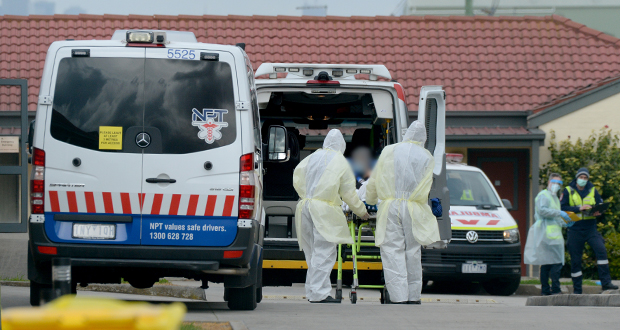More than a third of care residents who have contracted COVID-19 have died.[1] That’s more than 36 times higher than the rest of Australia’s population.
If COVID-19 was tearing through schools or workplaces in such numbers there would be uproar and a call for an urgent overhaul of how to treat this disease. So what can we do to stop more lives from being lost?
Most states prefer a ‘Hospital in the Home’ type policy which aims to contain the spread of COVID-19 by treating aged care residents with the disease within the facility, instead of transferring them to a hospital.
How the ‘Hospital in the Home’ system was developed was understandable. It was created partly to avoid swamping the hospital system and partly due to avoid disruption to aged care residents who might be unsettled by moving to an entirely new environment.
But months on, and 657 aged care deaths later, it’s clear that aged care homes are not designed or resourced to deal with an outbreak as infectious as COVID-19.
So Catholic Health Australia is calling on state and territory leaders to adopt a nationwide protocol that would see the first aged care residents infected with COVID-19 immediately transferred to a hospital.
It’s already standard policy in South Australia and Queensland, but these are states where the number of cases of COVID-19 remain thankfully low. We now need states like NSW and Victoria to urgently follow suit.
The women and men who work in our aged care sector are striving tirelessly to prevent COVID-19 from getting into their homes. But despite their best efforts we need to be realistic: the disease will continue to breach infection control for many months to come.
Aged care homes are designed and operated as home-like communal living environments with an emphasis on social engagement and interaction. The risk of cross infection in an aged care home is therefore significantly higher than in a hospital from both a staff and physical environment perspective.
For a virus like the flu, that risk is manageable and the aged care sector has decades of experience in how to keep residents safe. But COVID-19 has proven a much more deadly disease. It requires superior clinical skills and purpose built and equipped facilities which only a hospital can provide.
It’s also far more contagious, making it vitally important to identify, isolate, and move the first COVID-19 positive residents out of an aged care facility as quickly as possible. This will not only minimise the chance of the outbreak spreading, but also relieve the pressure on the overall healthcare sector.
Please login below to view content or subscribe now.
 Nursing Review The latest in heathcare news for nurses
Nursing Review The latest in heathcare news for nurses

